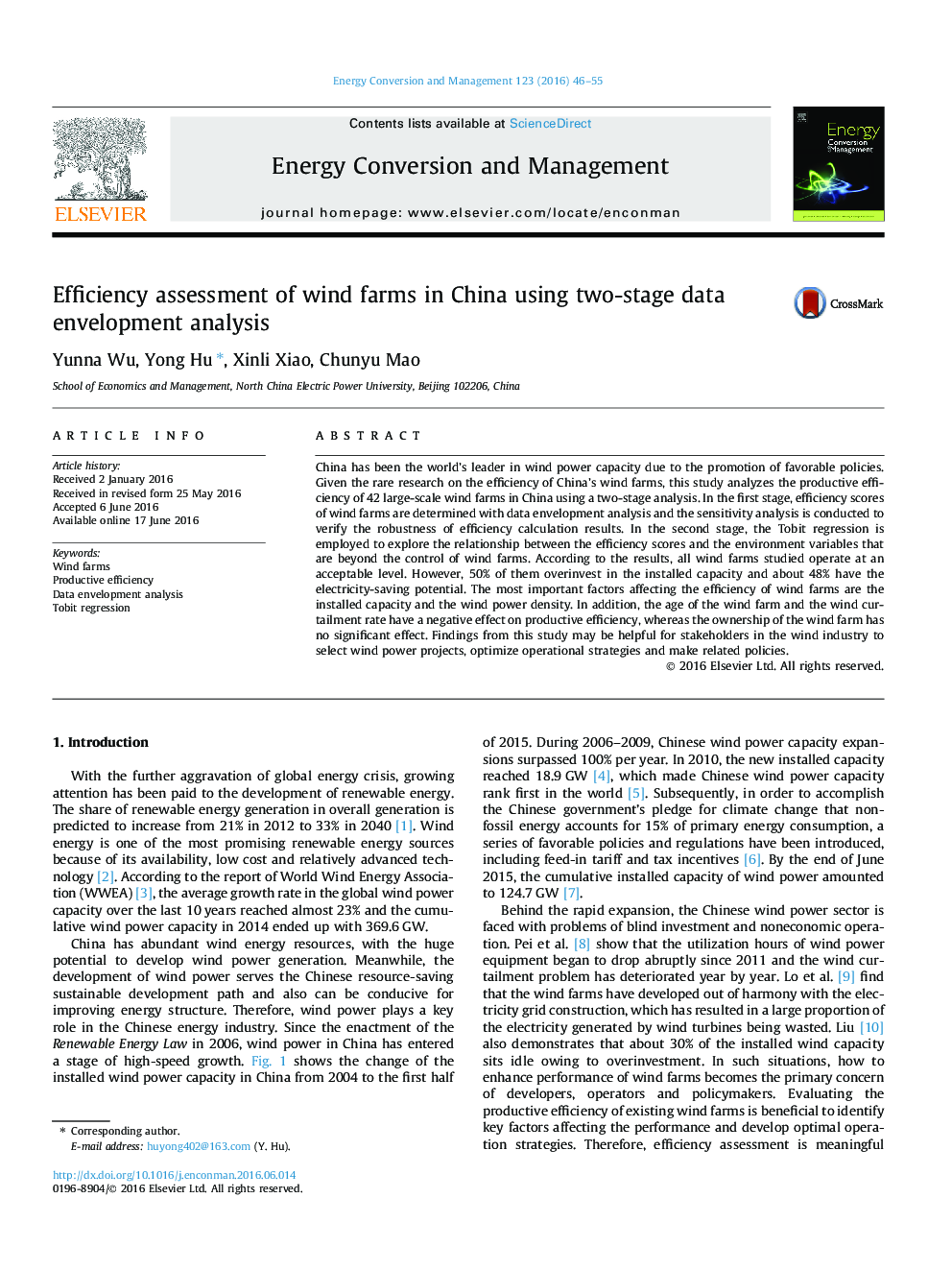| Article ID | Journal | Published Year | Pages | File Type |
|---|---|---|---|---|
| 760137 | Energy Conversion and Management | 2016 | 10 Pages |
•The efficiency of China’s wind farms is assessed by data envelopment analysis.•Tobit model is used to analyze the impact of uncontrollable factors on efficiency.•Sensitivity analysis is conducted to verify the stability of evaluation results.•Efficiency levels of Chinese wind farms are relatively high in general.•Age and wind curtailment rate negatively affect the productive efficiency.
China has been the world’s leader in wind power capacity due to the promotion of favorable policies. Given the rare research on the efficiency of China’s wind farms, this study analyzes the productive efficiency of 42 large-scale wind farms in China using a two-stage analysis. In the first stage, efficiency scores of wind farms are determined with data envelopment analysis and the sensitivity analysis is conducted to verify the robustness of efficiency calculation results. In the second stage, the Tobit regression is employed to explore the relationship between the efficiency scores and the environment variables that are beyond the control of wind farms. According to the results, all wind farms studied operate at an acceptable level. However, 50% of them overinvest in the installed capacity and about 48% have the electricity-saving potential. The most important factors affecting the efficiency of wind farms are the installed capacity and the wind power density. In addition, the age of the wind farm and the wind curtailment rate have a negative effect on productive efficiency, whereas the ownership of the wind farm has no significant effect. Findings from this study may be helpful for stakeholders in the wind industry to select wind power projects, optimize operational strategies and make related policies.
